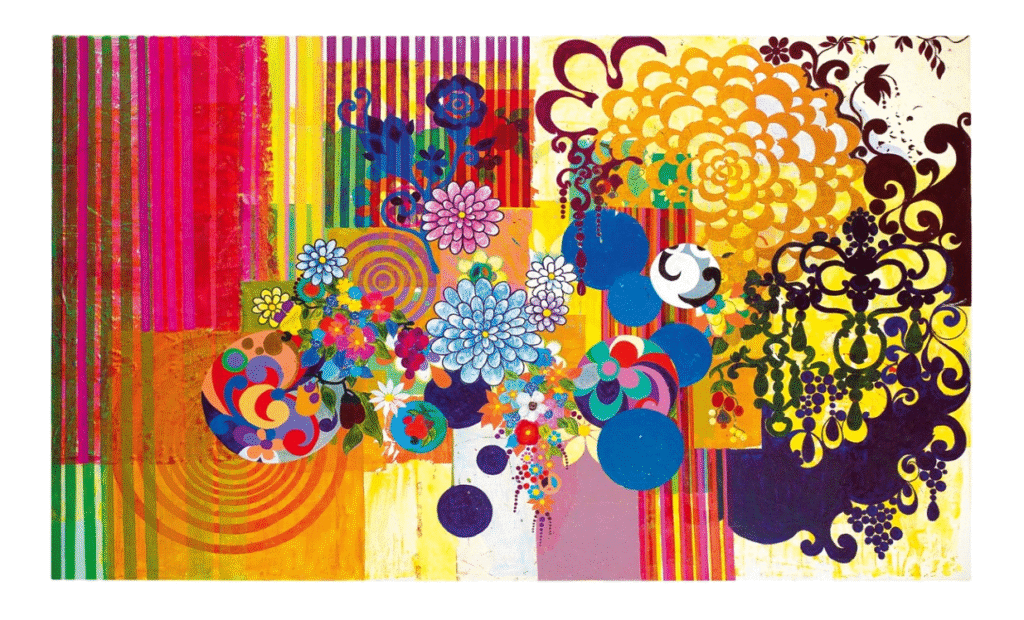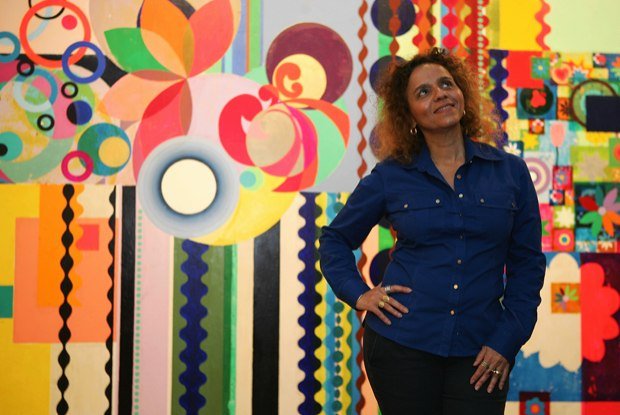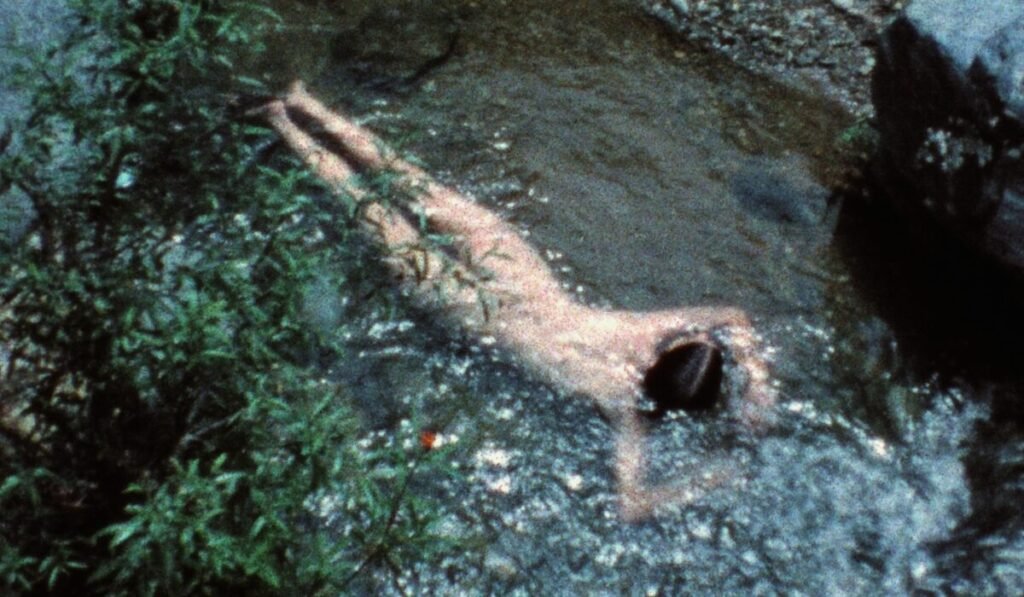Beatriz Milhazes was born in Rio de Janeiro in 1960 and graduated from the Escola de Artes Visuais do Parque Lage. Her education took place at a time when the Brazilian art scene sought to redefine the role of painting after the dominance of conceptual and performative trends in the 1970s.
Parque Lage, with its atmosphere of experimentation, was essential for Beatriz Milhazes to build her own artistic language. There, she distanced herself both from the constructive rigor inherited from Brazilian modernism and from expressionist gesture. Instead, she chose a path marked by color, ornamentation, and the critical reinterpretation of popular culture.
Style and artistic references of Beatriz Milhazes
From the beginning, Beatriz Milhazes showed interest in a painting style that engaged with multiple references. Her repertoire includes European and Brazilian modernism, colonial baroque, decorative ornamentation, stained glass, carnival, and fashion. This eclectic formation is reflected in the way she organizes her canvases. She rejects the idea of formal purity and embraces the coexistence of diverse patterns. Far from chaotic, her work obeys its own compositional rigor.

Private collection
The technique of Beatriz Milhazes is central to understanding her production. In the 1980s, she developed a unique method: painting motifs on transparent plastic sheets, transferring them to the canvas, and then removing the support. This process, which she calls “transfer,” results in a flat surface with no evident brushstrokes. The painting gains a graphic and serene quality, with vibrant colors and controlled textures. The technique also allows her to build layers, overlap motifs, and create visually dense compositions.
This process distinguishes Beatriz Milhazes from many contemporary painters. While much of today’s production values spontaneous gestures or direct appropriation of images, she prefers meticulous and slow work. The transfer technique creates a distance between the initial gesture and the final canvas, removing any sense of immediacy. The result is an image that, despite its exuberance, seems to have been built in silence.
International recognition
The reception of Beatriz Milhazes’s work has been marked by both enthusiasm and debate. Since the 1990s, her production has circulated widely in the international art circuit. She participated in the Venice Biennale in 2003 and has exhibited at institutions such as MoMA in New York and Tate Modern in London. Her presence in the art market has also been remarkable, achieving auction records that placed her among the most valued Brazilian artists of her generation.
Criticism, however, has not always been unanimous. Some interpret her painting as a kind of tropical exoticism tailored for the international market, a stylized and exportable Brazilian identity. Others argue that her work challenges the hierarchy between high art and decorative art, between austere modernism and popular ornament. The fact is that Beatriz Milhazes has established a unique position: her painting remains connected to Brazilian modernist tradition but does not reduce itself to it; it engages with the global market without being limited to national stereotypes.
The legacy of Beatriz Milhazes in contemporary art
For more than four decades, Beatriz Milhazes has demonstrated her ability to renew pictorial language in Brazil. Her training at Parque Lage, her transfer technique, and the international reception of her work are key aspects that explain the scope of her production. Her painting remains one of the most vital expressions of Brazilian contemporary art.



